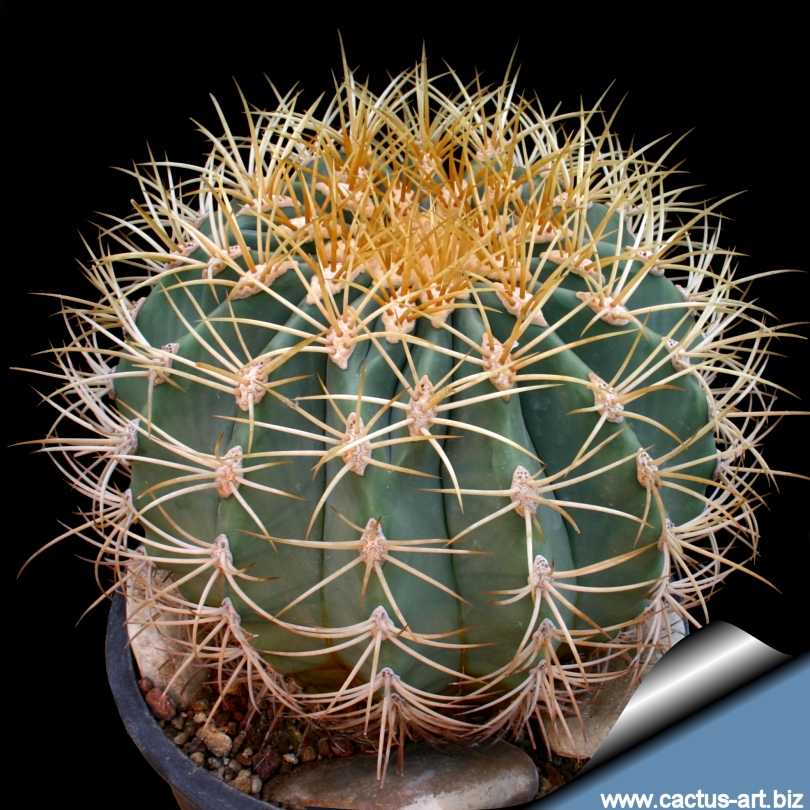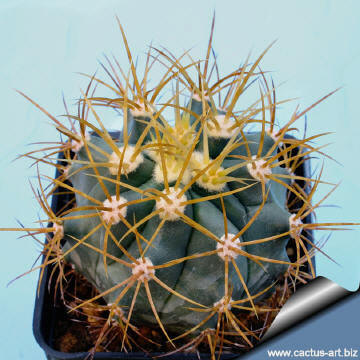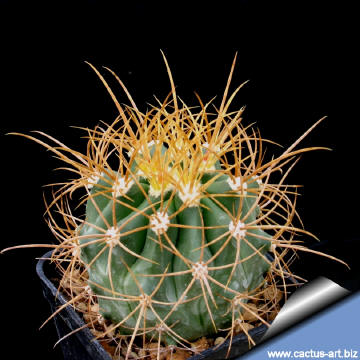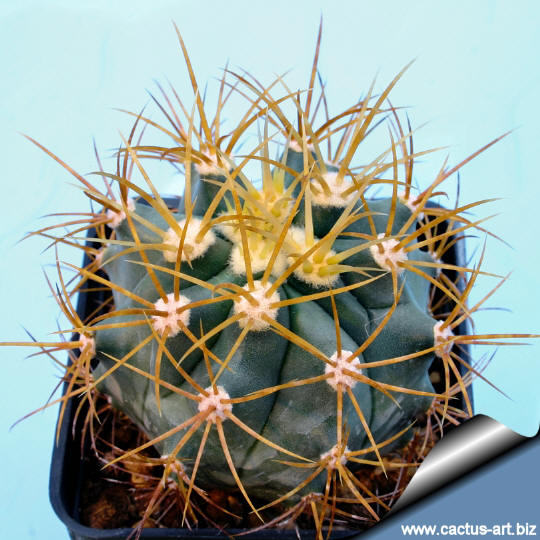|
|
|

Ferocactus diguetii is the largest of all of the genus Ferocactus and
reaches 4 m tall and may
grow almost 1 m in diameter.
|
 |
 |
|
.
|
 |
 |
|
Photo of conspecific taxa, varieties, forms and cultivars of
Ferocactus diguetii.
|
|


Advertising
|
|
|
|
|
Family:
Cactaceae (Cactus
Family)
Scientific name:
Ferocactus
diguetii (Weber) Britton & Rosevar.
diguetii
In cactaceae 3: 131, pl. II, fig 2; pl. 12, Fif 3, 1932,
Origin:
It is an island
endemic from the
Gulf of California, Mexico. (Baja California, Gulf islands
- Carmen, Santa Catalina, Cerralvo, Danzante, and San Diego islands)
Habitat:
Gravely slopes on rocky hills in the lower
sonoran desert and on island in the Gulf of California.
Ecology: This cactus ( like many other species — both plants and
animals — found on islands ) shows
the phenomenon of gigantism,
being larger and more robust than its
nearest relatives in
continental regions
Conservation status: Listed in
CITES appendix 2.
Common Names include: Giant barrel cactus
Etymology: The specific epithet honors
Leon Diguet, a French explorer who was investigating pearl fisheries on
Santa Catalina Island in the Gulf of California.
Synonyms:
- Echinocactus diguetii
Weber
In: Bull. Mus. Hist. Nat. Paris 4: 100, fig I, 1898
|
|
Description:
F. diguetii is a
spectacular cactus that grows up to 4 m tall. It is among the largest
species of column-like cacti,
usually unbranched,
forming a solitary column. The plants from from Santa catalina are
probably the largest and most spectacular Ferocactus.
Stem:
Massive, darck green, globular
flattened in juvenile specimens, then columnar. The usual height of this
species is to 2 meters, but some specimens can reach the 4 m of eight.
and 60-100 cm in diameter.
Ribs: Slightly
tuberculate, vertical, straight or wavy in moribund specimens, up to 3
cm tall. Mature plants have 25 to 35 ribs.
Areoles: Elongated, 1 x
2 cm wide, with short tan wool which turn chalky-white/grey and finally
erodes away in age.
Spines: 4 to 8 spines of which one
central (often up to 10 in juvenile specimens), clear yellow or sometime
reddish or brownish, almost all alike, subulated, not ringed or hooked,
slightly curved outward, up to 7 cm long.
Flowers: Fiery reddish
to orange, funnelform are about 4 cm long and wide. Floral tube with
fimbriate scales on ovary, inner perianth segment, oblanceolated, up to
2 cm long, 8 mm wide, dark red with yellowing margins, external perianth
segments brownish-yellow. Stamens basally yellow fading red toward te
tips, style orangish/red up to 18 mm long with longitudinal ridges
continuing in stigma lobes, this are yellow upp to 5-10 mm long.
Blooming season: Flowers
from March to May.
Fruits: Up to 3 cm long
and 3 cm wide They tend to dry at maturity and split open through a
basal pore.
Seeds: Glossy brown,
irregular, 1,5 mm wide.
Note: The variety
carmenesis only reaches
1 m in
height.
|
|
|
|

Has no ringed or hooking spines, but as seedling, spines have ornamental
gold appearance. The stem is slightly blue-green.
|
|
Cultivation: Slow growing
to start, but
it does well under cultivation.
Use very draining soil, water during the aestival growth
cycle (this plant needs plenty of water).
But it's necessary to avoid
wetting the bodies of these plants while they are in sunlight. A wet
cactus in the sun light can cause sun burning which can lead to scars
or even fungal infections, and death.
Needs full sun. Keep dry at 10°C in winter,
but it can tolerate sporadic light frost.
Reproduction:
Seeds are the only way of
reproducing.
|
|